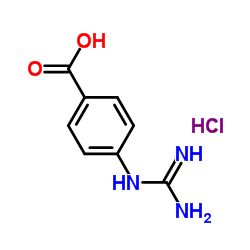Kinetics and mechanism for the conformational transition in p-guanidinobenzoate bovine trypsinogen induced by the isoleucine-valine dipeptide.
H J Nolte, E Neumann
Index: Biophys. Chem. 10(3-4) , 253-60, (1979)
Full Text: HTML
Abstract
The interaction between p-guanidinobenzoate-trypsinogen and the isoleucine-valine dipeptide has been investigated by temperature-jump relaxation spectrometry. Using the absorbance at 281 nm the concentration dependence of the relaxation parameters is consistent with the conventional induced-fit model: rapid ligand binding coupled to a slower intramolecular change; some alternative mechanisms can be excluded. At 296 K, 0.1 M Tris HCl, pH = 7.4, the dissociation equilibrium constant for the overall process is K = 5.1(+/- 0.2) X 10(-5) M; for the binding step K1 = 2.3(+/- 0.3) X 10(-3) M and the rate constants for the structural change are k2 = 26(+/-6)s-1 and k-2 = 0.61(+/- 0.04)s-1; the overall dissociation reaction enthalpy is delta H0 = 26(+/-6)KJmol-1 and the reactiom entropy is delta S0 = 4(+/- 20) kJ-1 mol-1. In combination with CD and X-ray crystallographic data, the results of this study suggest that the binding of the dipeptide to a trypsinogen-like, partially disordered conformation induces a transition to a trypsin-like highly ordered structure.
Related Compounds
| Structure | Name/CAS No. | Molecular Formula | Articles |
|---|---|---|---|
 |
N-(4-Carboxyphenyl)guanidine hydrochloride
CAS:42823-46-1 |
C8H10ClN3O2 |
|
The specificity of murine polyclonal and monoclonal antibodi...
1987-07-01 [Clin. Exp. Immunol. 69(1) , 157-65, (1987)] |
|
Evidence for an enzyme which cleaves the guanidinobenzoate m...
1983-02-01 [Eur. J. Biochem. 130(2) , 335-9, (1983)] |
|
Inhibition of prostasin secretion by serine protease inhibit...
2003-01-01 [J. Am. Soc. Nephrol. 14(1) , 11-6, (2003)] |
|
Mechanisms of the hyperkalaemia caused by nafamostat mesilat...
1994-01-01 [Br. J. Pharmacol. 111(1) , 173-8, (1994)] |
|
Elimination of the low-molecular weight proteinase inhibitor...
1987-01-01 [Res. Exp. Med. (Berl.) 187(6) , 401-6, (1987)] |